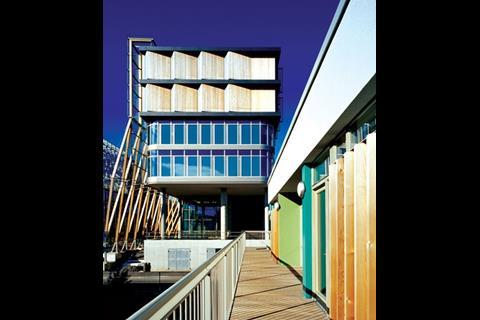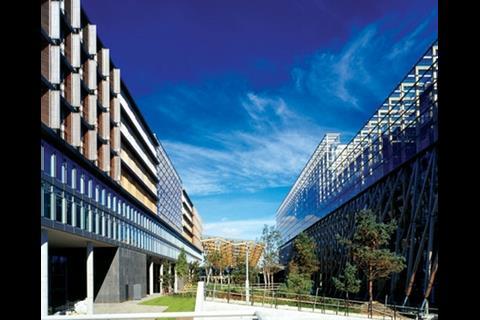The Irish economy has doubled in the past decade, and construction has been an important part of that. The emphasis is now moving from housing to infrastructure, says Richard Fitzpatrick of EC Harris
1) Introduction
Since 1997 the Irish economy has doubled in size. The construction industry, which accounts for 22% of GNP and 12% of employment, has become increasingly important to the economy during this period. Changing interest rates and uncertainty about future prices, especially for housing, mean turbulent times for the sector, and we need to recognise the economic impact this will have.
The emphasis of activity in the Irish construction sector has moved from the residential sector to infrastructure, and this has been accompanied by the appropriate migration of resources and skills.
The economic shift being experienced in Ireland can be viewed as a realignment to more realistic levels of growth, which still show a positive trend when compared with the rest of the eurozone.
With delivery of the governmentÔÇÖs national development plan, a more prudent approach by the financial institutions to lending and more realistic values being set within the property sector than previously, Ireland can expect to maintain a positive economic outlook, with steady growth as confidence is re-established within the construction industry.
2) The Irish Economy
Since the mid-nineties, Ireland has experienced consistent growth rates of up to 10% a year, and the Irish economy has doubled in size since 1997. This has been attributed to years of strong government planning through the implementation of five-year national development plans. These plans provided for large-scale investment in infrastructure and the focused development of Ireland as a base for multinational export-oriented companies.
Generous incentives, targeted especially at the manufacturing and internationally trading service industries, have made Ireland an attractive base for multinational companies. Manufacturing and certain service industries are subject to a corporate tax rate of only 12.5%, with no limits on profit repatriation. This is helped by IrelandÔÇÖs unique position as an English-speaking member of the European monetary system.
The economy expanded at a rapid rate in the first half of 2007 ÔÇô GDP grew at an annual rate of 6.7%, with final sales (GDP excluding stock building) expanding by more than 8%. This GDP performance is well above the 5.4% growth trend established since 2000, but activity looks set to slow somewhat over the next 18 months, primarily reflecting a housing market correction. This is expected to result in GDP growth of 4% in 2008, before a recovery in 2009 to 5%.
A sharp fall is expected in headline inflation, which is forecast to average 2.7% this year, compared with 4.8% in 2007. The rise in the labour force has outpaced employment growth of late, and this is set to continue in 2008, leading to a rise in unemployment. Labour force growth is forecast to slow, however, implying a reduction in the flow of immigration, at least for the next 12-18 months.
The Irish economy will suffer if the US falls into recession, a new assessment by the International Monetary Fund (IMF) says. Econometric modelling suggests a shock causing a 1% reduction in annual growth in the US could lead to a 1.75% decline in Irish growth in the same period. This sensitivity stems from IrelandÔÇÖs dependence on the US as an export market and source of investment.
3) The property market
The credit crunch, increases in interest rates, lendersÔÇÖ tightening of criteria and the market slowdown have resulted in developers holding back, and intense competition is being generated for the opportunities that remain in the commercial sector. For many contractors this means winning fewer tenders, a statistic borne out by the release last month of the Ulster BankÔÇÖs latest purchasing manager index, which shows activity has slumped to its lowest reading since the index began in 2000.
A recent survey of construction purchasing managers posted a reading of 35.7, well below the 50 level that is the midpoint between growth and recession in the sector. The decline in activity was attributed to ÔÇťthe conclusion of existing projects and a lack of new work to replace themÔÇŁ.
The sluggish rate of housing completions has clearly had an effect, while the commercial and infrastructure sectors have both shrunk, according to the December figures. It is of some concern that overall construction growth has been forced into negative territory since mid-2007. A slowdown in commercial activity had been anticipated for some time, but given the number of high-profile projects yet to be completed, the turnaround in the construction sector overall shows that a significant decline has happened sooner than expected. The fall in infrastructure activity is particularly surprising, as the national development plan is being maintained by the government and, indeed, accorded priority status in the recent budget.
Though still above the low points of 2001 and 2003, lack of confidence in the industry is evident. Data for December 2007 signalled marked pessimism among Irish construction firms, with more than 36% expecting activity to be lower at the end of 2008.
The state of the market means that financial institutions are restricting the granting of loans to developers and imposing stricter criteria before lending. The evidence on the ground is that promoters are turning to hybrid mixes of traditional and bridging/mezzanine finance to get traction behind deals that would otherwise stagnate. Higher costs of capital obviously mean that initial investment decisions need to be robust and sound.
The message is clear ÔÇô times have got tougher, and the impact of the credit crunch will be felt in 2008. While the financial institutions are still in a position to lend, it is going to be harder to borrow, and there will be more casualties.
However, good project opportunities will still arise, and fortune will favour those with the courage to put enough of their own money behind well thought-out investments, and those who are smart enough to know that sometimes you have to give a little away to get a profitable deal done.
4) Offices, industrial and warehouses
The commercial building sector accounts for about 12.3% of industry output. It is less well understood than other sectors, because data on the construction pipeline is less comprehensive and information tends to be less readily available to mainstream analysts. Growth in this sector is likely to continue during 2008 but at a slower level than in 2007. Overall, an uplift in the commercial sector of about 15% by the end of 2008 is anticipated, as major developments and schemes move through the planning process.
5) Retail
The big success stories in retail construction over the past decade have been shopping centres and retail parks. The £780m Dundrum town centre scheme has been the headline development in south Dublin. Last year alone new centres were developed in Arklow, Gorey, Athlone, Finglas and Tipperary Town.
However, given the level of supply growth, it is expected that build rates in retail construction will moderate somewhat in 2009 and beyond.
6) Infrastructure
Transport 21, the Irish infrastructure plan announced in November 2005, should greatly expand IrelandÔÇÖs transport network ÔÇô the government has agreed total investment of ┬ú27bn over 10 years. In essence, this comprises two programmes. The first is a national programme with the principal aim of developing a high-quality national road and public transport network, and improving regional and local public transport.
The second part of the programme includes the Greater Dublin area programme, which will transform the areaÔÇÖs public transport system and upgrade the M50 motorway. It includes Metro North and Metro West as well as seven projects to expand the Luas-Dublin light rail system.
For 2008 a total of £2bn in capital expenditure has been allocated from the exchequer to Transport 21 projects and programmes, while the PPP contribution from the private sector for the construction of toll-based roads is £1.6bn.
The National Roads Authority has signed contracts for the full suite of its PPP projects. The major inter-urban road programme will continue in 2008, and a number of heavy rail projects will reach completion. Work will continue on two of the Luas rail lines and on the M50 upgrade.
7) Construction costs
There was a slight fall in IrelandÔÇÖs consumer inflation rate in the last quarter of 2007, from 5% to 4.7%. This is expected to fall to 4% in 2008.
In the building industry the inflation rate was similar, at 4.2%. The main driver has been the cost of labour, which has increased by about 3.4% over the past year. This is well ahead of the 2.5% wage rate increase that came in on 1 January 2008 as part of the Registered Agreement for the Construction Industry with the Services, Industrial, Professional and Technical Union of Ireland.
Labour rates are very responsive to construction workload and there has, for some years, been a shortage of skilled site labour, which has been only partly answered by workers recruited from overseas, particularly from countries that have recently joined the EU.
Materials prices are expected to increase in line with consumer inflation, although oil-based materials are forecast to rise faster than this and steel prices will continue to reflect high worldwide demand.
After seven consecutive price hikes by the European mills and rising demand from contractors, steel prices are stabilising. In Ireland, until 2003, the base price of steel had remained more or less untouched at about £350 per tonne for many years. A sudden surge in demand from China drove the price up sharply, only for it to fall again before rising steadily to a record high of £687 per tonne in September 2007. Since then the price has stabilised.
Civil engineering prices have increased by 6.5% over the past year. Steel, cement and timber are the main drivers behind the increased rate of inflation.
Major contractors and their key first-tier subcontractors and suppliers are hardening their attitude to civil engineering projects, which often carry more risk for the limited number of contractors capable of undertaking them. This premium has been estimated at about 2% of the overall construction cost, with a further premium of between 1% and 2% where there is a substantial transfer of design and commercial risk to the contractor.
8) Tender prices
Public-sector construction is expected to increase in 2008, after lower-than-forecast figures for 2007, perhaps because of new public-sector procurement procedures and forms of contract.
The outlook for 2008 is far from certain, however, and principal contractors and subcontractors are competing to fill their order books. This is resulting in keen pricing, particularly in preliminaries.
Tender prices received during 2007 were, on average, at very similar levels to 2006, and the Society of Chartered SurveyorsÔÇÖ tender price index shows a rise of just 0.2% for the first six months of 2007. It is likely that the growing capacity within the construction industry will drive margins down further during 2008. We are predicting an overall fall in tender prices of 2-3%, with relatively straightforward projects receiving the most competitive prices.
9) Ireland in numbers
See attached graph.
10) Costs for various buildings (£ per m2)
See attached graph.
Downloads
Ireland in numbers
Other, Size 0 kbCosts for various buildings(£ per m2)
Other, Size 0 kb


























No comments yet